Oropharyngeal Airway (OPA)
Introduction
The Oropharyngeal Airways (OPAs) is a curved tube, which follows the curvature of the palate, with a flange or a safety lip at one end and an opening at the other. OPAs are typically made from soft, flexible materials to minimize discomfort during insertion.
The oropharyngeal lies between the soft palate and the hyoid bone and includes the base of the tongue, soft palate, and tonsils.
OPAs works to keep the tongue away from the posterior pharynx and the soft palate away from the pharyngeal wall.
Indication
Unconscious patients requiring airway support.
During Airway Adjunct Placement (Used before proceeding with other airway management techniques).
To maintain airway patency in cases of sedation etc.
Contraindications
Intact Gag Reflex
Trismus
Cautions
Severe Maxillofacial Trauma Or Injury
Complications
Risk of trauma to the teeth and palate.
Laryngospasm
The OPA can become obstructed by one of the three possible sites and could cause further hypoxia:
- The tongue can occlude the end of the airway.
- Airway obstructed by the epiglottis.
- Airway lodged in the vallecula.
Benefits Of OPAs
There are multiple benefits in inserting an OPA other other airway adjuncts.
Airway Patency
By preventing the tongue from obstructing the upper airway, OPAs ensure a clear passage for air to enter and exit the lungs, facilitating effective ventilation.
Improved Ventilation
OPAs enhance ventilation by allowing for unobstructed airflow through the upper airway.
Time-Efficient Airway Management
Inserting an OPA is a relatively quick and straightforward procedure. In time-critical emergency situations, using an OPA can rapidly establish an open airway, allowing greater focus on other critical aspects of patient care.
Universal Applicability
OPAs are suitable for a wide range of patients, regardless of age or medical condition. They can be used effectively in both adult and paediatric populations, making them a versatile tool in various prehospital and emergency scenarios.
Minimal Patient Complications/Discomfort
Compared to more invasive airway management techniques, such as endotracheal intubation, OPA insertion is less invasive and generally causes minimal patient discomfort. This is particularly advantageous in cases where immediate airway intervention is required, and the patient’s condition allows for OPA use.
OPA Sizes
Oropharyngeal airways (OPAs) come in various sizes, typically ranging from paediatric (000) to adult sizes (5).
The sizes are usually labelled by their length or by color-coded systems that correspond to specific age groups or patient sizes.
Sizing OPA
To choose the correct size of OPA place the flange of the OPA parallel to the front incisors and the tip at the angle of the mandible (angle of jaw).
Sizing of the OPA is crucial as if too short it may not sperate the tongue form the posterior pharyngeal wall and too long may occlude the airway by displacing the epiglottis.
Procedure – Adults
Check airway to ensure no foreign bodies are present which could be pushed further into the larynx.
Using the sizing method above – select an appropriate OPA.
Hyperextend the head and neck and lift the jaw anteriorly. If cervical injury exists avoid extending neck
Using the other hand insert the OPA upside-down until the tip reaches the soft palate, at which paint rotate 180 and advance the airway until in line with the pharynx.
The flange of the OPA should lie between the patient’s teeth or gums. Do not pull lips over the flange as this can cause labial frenulum damage.
Reassess airway by looking, listening, and feeling for signs of breathing.
Document insertion time and complications, if any.
Procedure – Paediatrics
This method is utilised for paediatrics due to the underdeveloped nature of the hard palate.
Check airway to ensure no foreign bodies are present which could be pushed further into the larynx.
Using the sizing method above – select an appropriate OPA.
Insert a tongue depressor to depress tongue and insert OPA in the same orientation as it will sit, ‘right way up'.
The flange of the OPA should lie between the patient’s teeth or gums. Do not pull lips over the flange as this can cause labial frenulum damage.
Reassess airway by looking, listening, and feeling for signs of breathing.
Document insertion time and complications, if any.
Ongoing Monitoring
Ongoing monitoring of an oropharyngeal airway (OPA) is essential to ensure its continued effectiveness in maintaining a patient’s airway and to promptly address any complications that may arise.
If readjustment of OPA is needed – remove adjunct entirely and follow reinsertion procedure.
Airway Patency and Respiratory Status
Check the OPA’s position regularly to ensure that it remains in the correct position and is not dislodged. Observe the chest rise and fall with each breath to confirm that the airway is patent and allowing for adequate ventilation.
Proper Head Positioning
Ensure that the patient’s head remains properly positioned to maintain airway alignment and to prevent exacerbation of any potential cervical spine injuries.
Assess For Complications
Regularly assess for any complications related to OPA insertion, such as soft tissue trauma, dental damage, or laryngospasm.
Document
Record the ongoing monitoring and assessment of the OPA. Accurate documentation is essential for continuity of care.
Key Points
- The primary function of an OPA is to maintain the patency of a patient’s airway. By preventing the tongue from obstructing the upper airway, OPAs ensure a clear passage for air to flow in and out of the lungs, facilitating effective ventilation.
- OPAs are available in various sizes. Correct sizing is vital to ensure adequate function.
- In the paediatric population, the OPA should be inserted the ‘right way up’ and not rotated 180.
Bibliography
Gregory, P. and Mursell, I. (2010). Manual of clinical paramedic procedures. Chichester: Wiley-Blackwell.
Joint Royal Colleges Ambulance Liaison Committee and Association of Ambulance Chief Executives (2022). JRCALC Clinical Guidelines 2022. Class Professional Publishing.
Introduction
The Oropharyngeal Airways (OPAs) is a curved tube, which follows the curvature of the palate, with a flange or a safety lip at one end and an opening at the other. OPAs are typically made from soft, flexible materials to minimize discomfort during insertion.
The oropharyngeal lies between the soft palate and the hyoid bone and includes the base of the tongue, soft palate, and tonsils.
OPAs works to keep the tongue away from the posterior pharynx and the soft palate away from the pharyngeal wall.
Indication
Unconscious patients requiring airway support.
During Airway Adjunct Placement (Used before proceeding with other airway management techniques).
To maintain airway patency in cases of sedation etc.
Contraindications
Intact Gag Reflex
Trismus
Cautions
Severe Maxillofacial Trauma Or Injury
Complications
Risk of trauma to the teeth and palate.
Laryngospasm
The OPA can become obstructed by one of the three possible sites and could cause further hypoxia:
- The tongue can occlude the end of the airway.
- Airway obstructed by the epiglottis.
- Airway lodged in the vallecula.
Benefits Of OPAs
There are multiple benefits in inserting an OPA other other airway adjuncts.
Airway Patency
By preventing the tongue from obstructing the upper airway, OPAs ensure a clear passage for air to enter and exit the lungs, facilitating effective ventilation.
Improved Ventilation
OPAs enhance ventilation by allowing for unobstructed airflow through the upper airway.
Time-Efficient Airway Management
Inserting an OPA is a relatively quick and straightforward procedure. In time-critical emergency situations, using an OPA can rapidly establish an open airway, allowing greater focus on other critical aspects of patient care.
Universal Applicability
OPAs are suitable for a wide range of patients, regardless of age or medical condition. They can be used effectively in both adult and paediatric populations, making them a versatile tool in various prehospital and emergency scenarios.
Minimal Patient Disturbance
Compared to more invasive airway management techniques, such as endotracheal intubation, OPA insertion is less invasive and generally causes minimal patient discomfort. This is particularly advantageous in cases where immediate airway intervention is required, and the patient’s condition allows for OPA use.
OPA Sizes
Oropharyngeal airways (OPAs) come in various sizes, typically ranging from paediatric (000) to adult sizes (5).
The sizes are usually labelled by their length or by color-coded systems that correspond to specific age groups or patient sizes.
Sizing OPA
To choose the correct size of OPA place the flange of the OPA parallel to the front incisors and the tip at the angle of the mandible (angle of jaw).
Sizing of the OPA is crucial as if too short it may not sperate the tongue form the posterior pharyngeal wall and too long may occlude the airway by displacing the epiglottis.
Procedure – Adults
Check airway to ensure no foreign bodies are present which could be pushed further into the larynx.
Using the sizing method above – select an appropriate OPA.
Hyperextend the head and neck and lift the jaw anteriorly. If cervical injury exists avoid extending neck
Using the other hand insert the OPA upside-down until the tip reaches the soft palate, at which paint rotate 180 and advance the airway until in line with the pharynx.
The flange of the OPA should lie between the patient’s teeth or gums. Do not pull lips over the flange as this can cause labial frenulum damage.
Reassess airway by looking, listening, and feeling for signs of breathing.
Document insertion time and complications, if any.
Procedure – Paediatrics
This method is utilised for paediatrics due to the underdeveloped nature of the hard palate.
Check airway to ensure no foreign bodies are present which could be pushed further into the larynx.
Using the sizing method above – select an appropriate OPA.
Insert a tongue depressor to depress tongue and insert OPA in the same orientation as it will sit, ‘right way up'.
The flange of the OPA should lie between the patient’s teeth or gums. Do not pull lips over the flange as this can cause labial frenulum damage.
Reassess airway by looking, listening, and feeling for signs of breathing.
Document insertion time and complications, if any.
Ongoing Monitoring
Ongoing monitoring of an oropharyngeal airway (OPA) is essential to ensure its continued effectiveness in maintaining a patient’s airway and to promptly address any complications that may arise.
If readjustment of OPA is needed – remove adjunct entirely and follow reinsertion procedure.
Airway Patency and Respiratory Status
Check the OPA’s position regularly to ensure that it remains in the correct position and is not dislodged. Observe the chest rise and fall with each breath to confirm that the airway is patent and allowing for adequate ventilation.
Proper Head Positioning
Ensure that the patient’s head remains properly positioned to maintain airway alignment and to prevent exacerbation of any potential cervical spine injuries.
Assess for Complications
Regularly assess for any complications related to OPA insertion, such as soft tissue trauma, dental damage, or laryngospasm.
Document
Record the ongoing monitoring and assessment of the OPA. Accurate documentation is essential for continuity of care.
Key Points
- The primary function of an OPA is to maintain the patency of a patient’s airway. By preventing the tongue from obstructing the upper airway, OPAs ensure a clear passage for air to flow in and out of the lungs, facilitating effective ventilation.
- OPAs are available in various sizes. Correct sizing is vital to ensure adequate function.
- In the paediatric population, the OPA should be inserted the ‘right way up’ and not rotated 180.
Bibliography
Gregory, P. and Mursell, I. (2010). Manual of clinical paramedic procedures. Chichester: Wiley-Blackwell.
Joint Royal Colleges Ambulance Liaison Committee and Association of Ambulance Chief Executives (2022). JRCALC Clinical Guidelines 2022. Class Professional Publishing.


